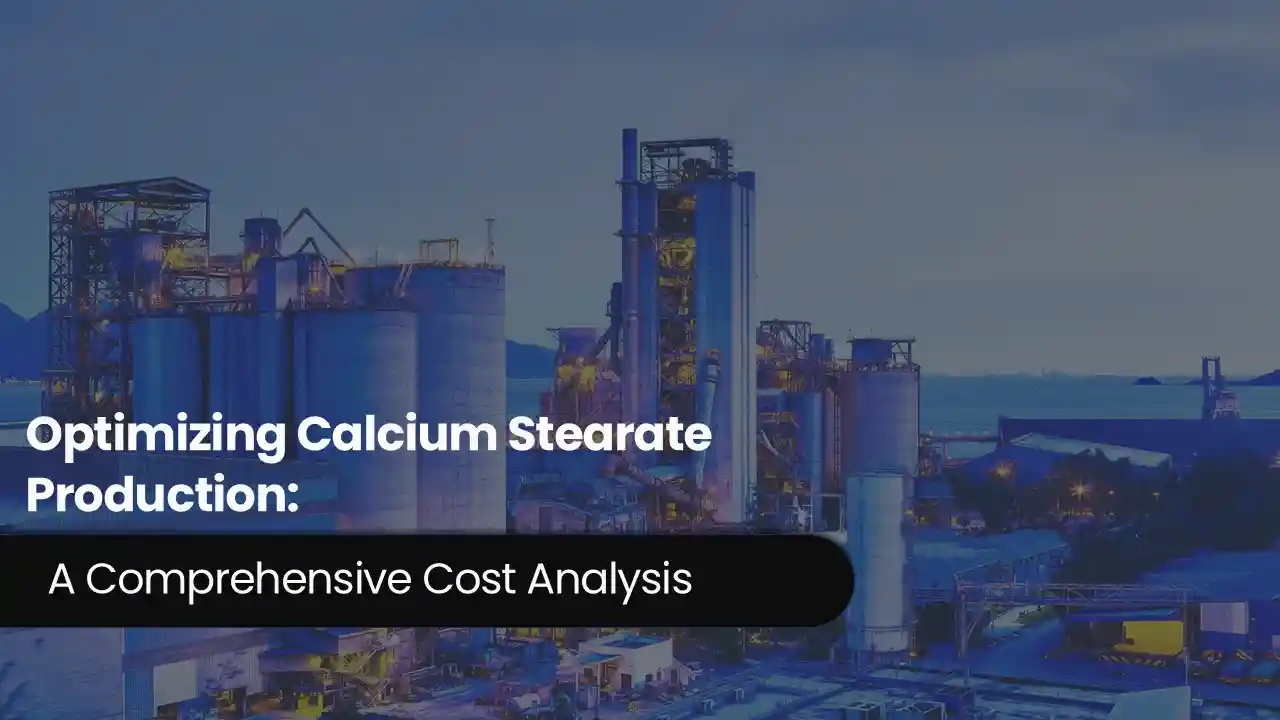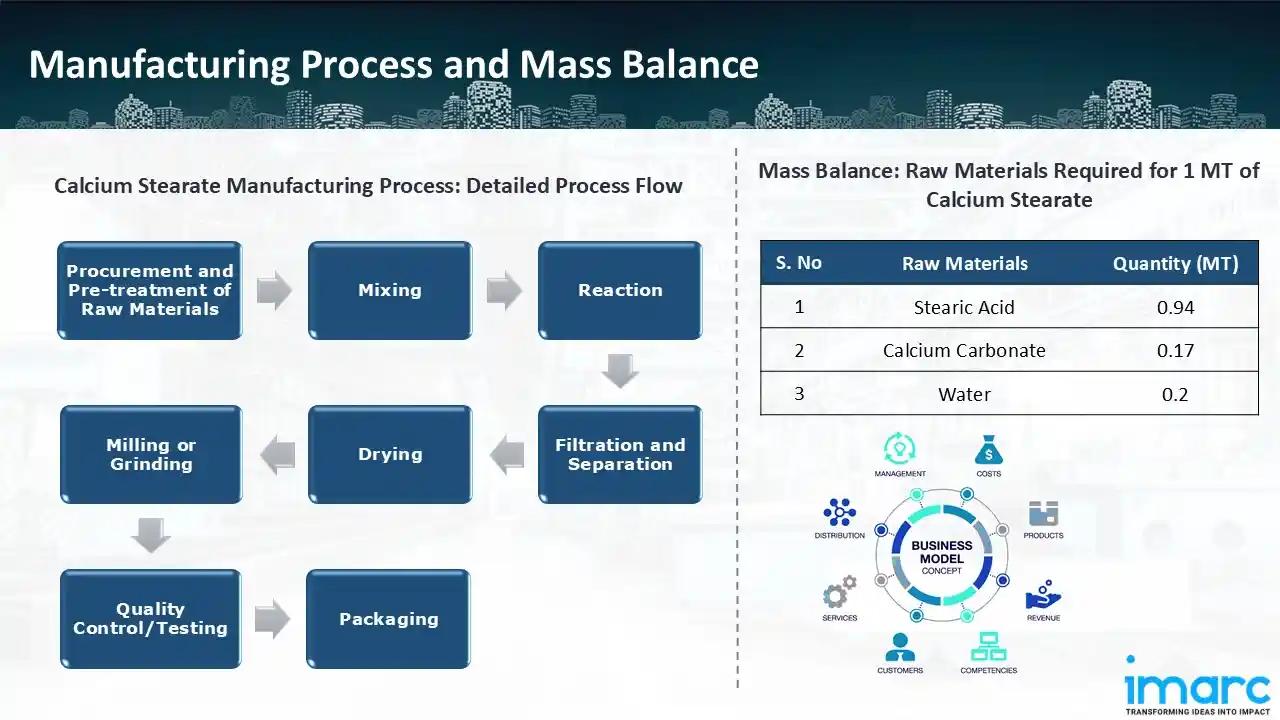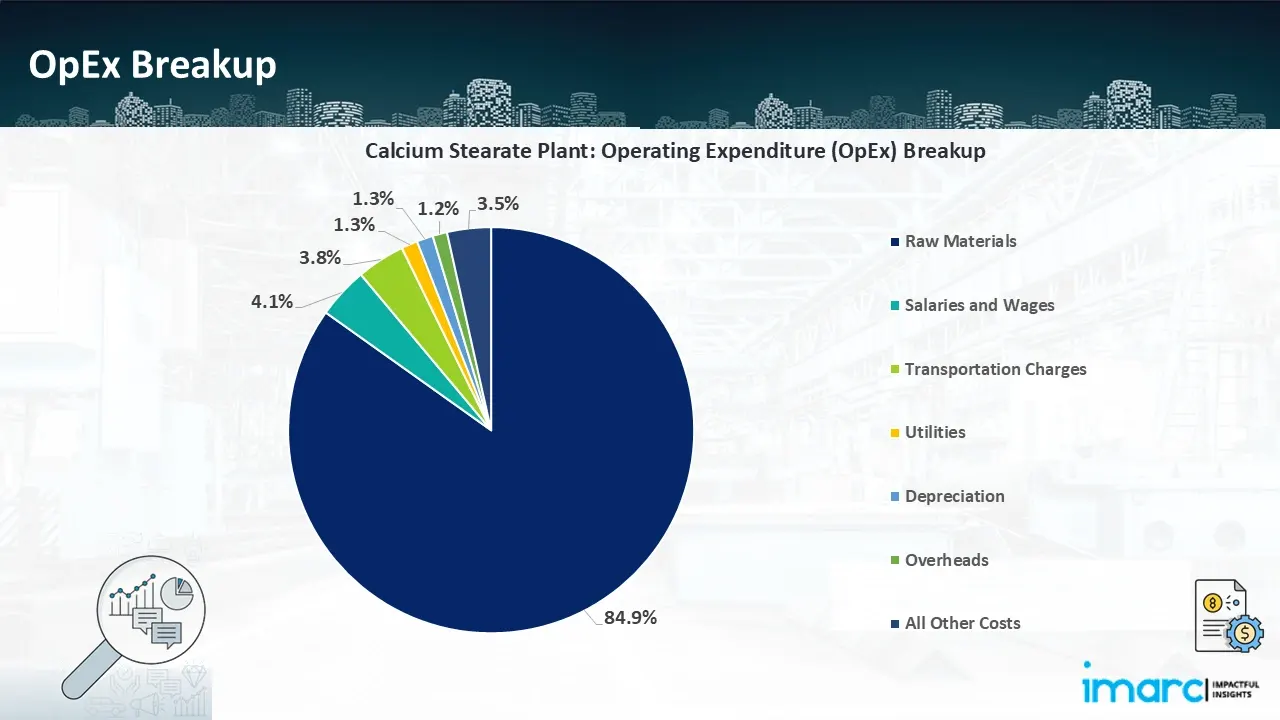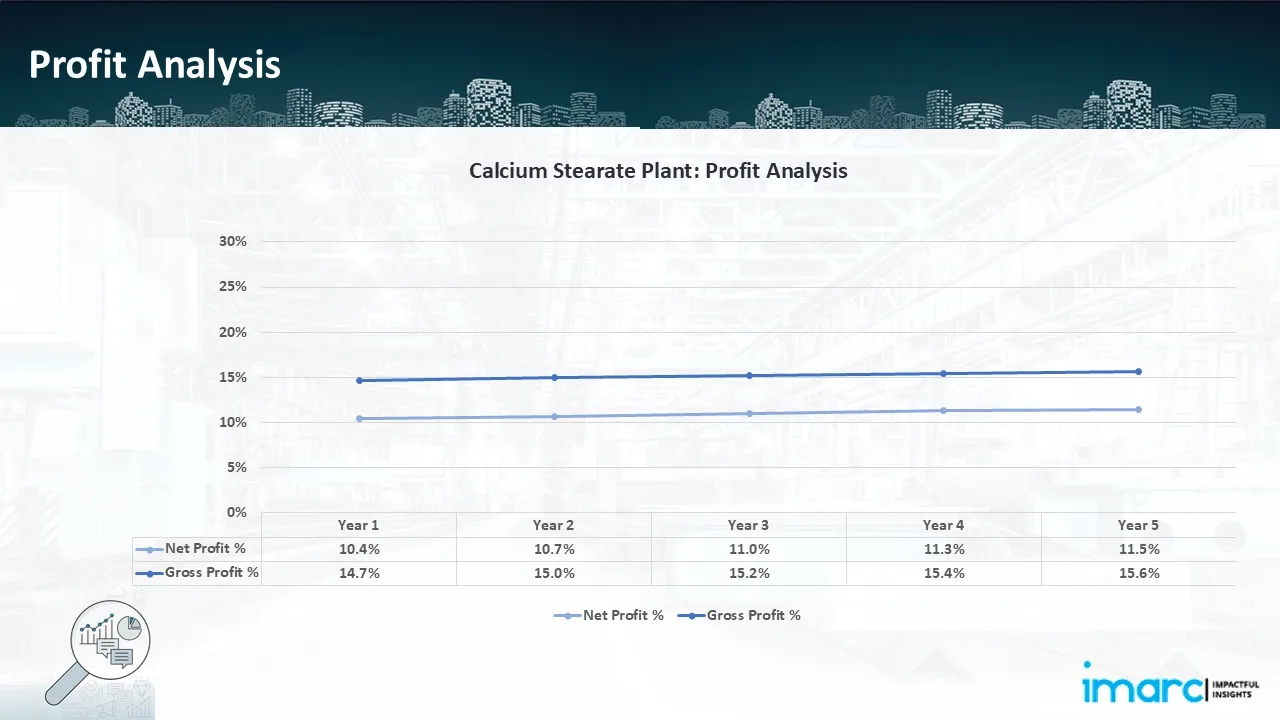Optimizing Calcium Stearate Production: A Comprehensive Cost Analysis

What is Calcium Stearate?
Calcium stearate, a key chemical compound, holds significant importance across various industries due to its multifunctional properties.
Key Applications Across Industries:
Comprising calcium and stearic acid, it serves as a versatile additive and processing aid. As a widely utilized stabilizer and lubricant in the manufacturing of plastics, rubber, and pharmaceuticals, calcium stearate plays a pivotal role in enhancing material properties and processing efficiency.
What the Expert Says: Market Overview & Growth Drivers
According to an IMARC study, the global calcium stearate market was valued at USD 1.2 Billion in 2024, growing at a CAGR of 4.4% from 2019 to 2024. Looking ahead, the market is expected to grow at a CAGR of approximately 3.9% from 2025 to 2033, reaching a projected value of USD 1.7 Billion by 2033. The market for calcium stearate is experiencing robust growth driven by several key factors and emerging trends.
One of the primary drivers is the expanding demand in the plastics and rubber industries, where calcium stearate acts as a critical processing aid, improving material properties and manufacturing efficiency. As industries emphasize sustainable practices, calcium stearate's eco-friendly nature further propels its market growth, aligning with the global shift towards greener additives. In the pharmaceutical sector, calcium stearate's role as a lubricant and flow agent in tablet manufacturing contributes to its increased adoption. Additionally, the growing demand for PVC in construction materials augments the need for calcium stearate as a heat stabilizer, reinforcing its market position.
Case Study on Cost Model of Calcium Stearate Manufacturing Plant:
Objective
One of our clients has approached us to conduct a feasibility study for establishing a mid to large-scale calcium stearate manufacturing plant in Cilegon (Banten Province), Indonesia.
IMARC Approach: Comprehensive Financial Feasibility
We have developed a comprehensive financial model for the plant's setup and operations. The proposed facility is designed with a production capacity of 33.4 tons of calcium stearate per day.
Manufacturing Process: Calcium stearate is produced through several demanding processes to ensure the quality and consistency of the final product. Two of the raw materials acquired prior to preprocessing are stearic acid and calcium hydroxide, among many others, which are properly sourced and purified to remove impurities. High-shear mixers are employed in this mixing stage to combine the raw ingredient from precise amounts to a uniform outcome. The combination is heated under regulated conditions during the reaction step, which allows the stearic acid to combine with the calcium hydroxide to produce calcium stearate. The final product is filtered and separated to eliminate contaminants and unreacted components, guaranteeing a high-purity and uniform final product. After filtering, the material is transferred for drying, usually with fluidised bed dryers or rotary dryers, to eliminate extra moisture and stabilise the final product. The dried substance is next ground and milled to produce the required homogeneity and particle size, which are essential for its uses. The product is then put through testing and quality control, where factors including moisture content, particle size, and purity are closely examined to make sure they meet industry requirements. Last but not the least, the calcium stearate is presented in moisture-resistant containers to maintain its quality throughout transportation and storage, making it appropriate for a variety of uses.

Get a Tailored Feasibility Report for Your Project Request Sample
Mass Balance and Raw Material Required: The primary raw materials utilized in the calcium stearate manufacturing plant include stearic acid, calcium carbonate and water. For a plant producing approximately 1 MT of calcium stearate, the raw material requirements are as follows: stearic acid (0.94 MT), calcium carbonate (0.17 MT), and water (0.2 MT).
List of Machinery
The following equipment was required for the proposed plant:
- 3000L Kneader Mixer Machine
- Double-layer Dehumidifier
- Double Spiral Storage Silo
- Powder Pulverizing Machine with water cooling system
- Automatic Vacuum Packing Machine
- Natural Gas Boiler
- Frequency Converter
- Platform
- Electric Control System
- Spare Parts
Techno-Commercial Parameter:
- Capital Investment (CapEx): Capital expenditure (CapEx) in a manufacturing plant includes various investments essential for its setup and long-term operations. It covers machinery and equipment costs, including procurement, installation, and commissioning. Civil works expenses involve land development, factory construction, and infrastructure setup. Utilities such as power, water supply, and HVAC systems are also significant. Additionally, material handling systems, automation, environmental compliance, and safety measures are key components. Other expenditures include IT infrastructure, security systems, and office essentials, ensuring operational efficiency and business growth.
- Operating Expenditure (OpEx): Operating expenditure is the cost incurred to operate a manufacturing plant effectively. OpEx in a manufacturing plant typically includes the cost of raw materials, utilities, depreciation, taxes, packing cost, transportation cost, and repairs and maintenance. The operating expenses are part of the cost structure of a manufacturing plant and have a significant effect on profitability and efficiency. Effective control of these costs is necessary for maintaining competitiveness and growth.

- Profitability Analysis Year on Year Basis: The proposed calcium stearate plant, with a capacity of 33.4 tons per day, achieved an impressive revenue of US$ 8.78 million in its first year. We assisted our client in developing a detailed cost model, which projects steady growth, with revenue rising throughout the projected period. Moreover, gross profit improved from 14.7% to 15.6%, and net profit rise from 10.4% to 11.5%, highlighting strong financial viability and operational efficiency.

Conclusion & IMARC's Impact:
Our financial model for the calcium stearate manufacturing plant was meticulously designed to meet the client’s objectives. It provided a thorough analysis of production costs, including raw materials, manufacturing processes, capital expenditure, and operational expenses. Tailored to the specific requirement of producing 33.4 tons of calcium stearate per day, the model highlights key cost drivers and forecasts profitability, considering market trends, inflation, and potential fluctuations in raw material prices. This comprehensive financial model offers the client valuable insights for strategic decision-making, demonstrating our commitment to delivering precise, client-focused solutions that ensure the long-term success of large-scale manufacturing projects.
Why Choose IMARC:
IMARC's Financial Model Expertise: Helping Our Clients Explore Industry Economics
IMARC is a global market research company that offers a wide range of services, including market entry and expansion, market entry and opportunity assessment, competitive intelligence and benchmarking, procurement research, pricing and cost research, regulatory approvals and licensing, factory setup, factory auditing, company incorporation, incubation services, recruitment services, and marketing and sales.
Brief List of Our Services: Market Entry and Expansion
- Market Entry and Opportunity Assessment
- Competitive Intelligence and Benchmarking
- Procurement Research
- Pricing and Cost Research
- Sourcing
- Distribution Partner Identification
- Contract Manufacturer Identification
- Regulatory Approvals, and Licensing
- Factory Setup
- Factory Auditing
- Company Incorporation
- Incubation Services
- Recruitment Services
- Marketing and Sales
Under our factory setup services, we assist our clients in exploring the feasibility of their plants by providing comprehensive financial modeling. Additionally, we offer end-to-end consultation for setting up a plant in India or abroad. Our financial modeling includes an analysis of capital expenditure (CapEx) required to establish the manufacturing facility, covering costs such as land acquisition, building infrastructure, purchasing high-tech production equipment, and installation. Furthermore, the layout and design of the factory significantly influence operational efficiency, energy consumption, and labor productivity, all of which impact long-term operational expenditure (OpEx). So, every parameter is covered in the analysis.
At IMARC, we leverage our comprehensive market research expertise to support companies in every aspect of their business journey, from market entry and expansion to operational efficiency and innovation. By integrating our factory setup services with our deep knowledge of industry dynamics, we empower our clients to not only establish manufacturing facilities but also strategically position themselves in highly competitive markets. Our financial modeling and end-to-end consultation services ensure that clients can explore the feasibility of their plant setups while also gaining insights into competitors' strategies, technological advancements, and regulatory landscapes. This holistic approach enables our clients to make informed decisions, optimize their operations, and align with sustainable practices, ultimately driving long-term success and growth.
Our Clients
Contact Us
Have a question or need assistance?
Please complete the form with your inquiry or reach out to us at
Phone Number
+91-120-433-0800+1-201-971-6302
+44-753-714-6104











